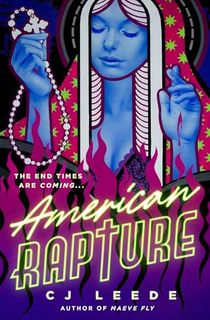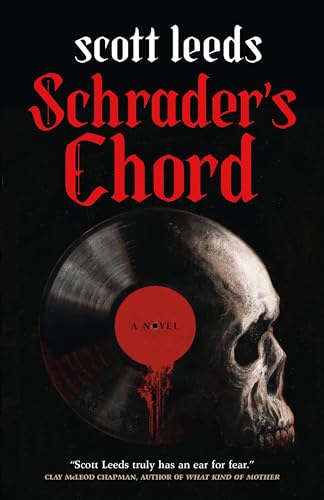The thump of a drum, the pluck of a bass guitar, the shrill feedback of a mic. These are the sounds associated with music, the convergence of melodies and arrangements to form one resounding chorus.
Whether it is a scream into the void or a croon that lasts decades, we immerse ourselves within songs in ways that are not dissimilar from finding ourselves in another world thanks to the literary magic of fiction.
Stories told, emotions experienced, and sentiments shared, whether in song or through the written word, succeed through their rawness and vulnerability.
Above all, the horror genre fits this pedigree, shining lights in the darkest of spaces and giving voices to the whispers left quiet.
While the poeticism between horror and music may not seem overly apparent, sitting with the idea begins to make an eerie amount of sense. Our racing hearts feel like battered drums, our blood sings with suspense wondering what lies around the corner.
And most of all, the cathartic scream that leaves our lips feels akin to something of a rock ballad, a pop song with an iconic bridge, or wail into the artistic void for all to experience.
These visceral experiences brought to life through reading horror take on new meaning when examined musically, a beautiful relationship on full display.
The world of books and music is a vast one filled with every variety of emotions, theme, and tone. Yet, as it pertains to horror, our options are plentiful when the melodic and the macabre combine.
Besides the visceral similarities mentioned previously, so much of storytelling with conviction is accomplished through refrains, hitting certain beats, and building into a deafening crescendo.
For example, the subgenre of Gothic horror thrives on repetitive happenings within an atmosphere of unease, concluding with one earth-shattering (ear-splitting) revelation, a secret that is hard to predict.
It is clear to see how horror is at home within the musical space, thriving on similar technical devices and illustrious themes to deliver memorable stories loaded with deeper mechanics.
Let's take a look at some musical horror books to go deeper.

Schrader's Chord: A Novel
Numerous books have achieved this feeling, such as Scott Leeds’ Schrader’s Chord. This is a novel that perfectly embodies all the power (and horror) behind music of every variety.
We follow one man’s return home following the death of his father. Left to him are the keys to the family record shop and a collection of vinyl records that, when played in unison, open a portal to hell.
Sure, there are apparent plot markers for how this book succeeds in defining the beautiful relationship between horror and music, but the smaller scenes, and the feelings of the songs mentioned in tune with the emotions on display make the real magic happen.
Leeds plucks on your heartstrings with every minuscule moment between characters.
It’s a rock ballad, a love song, a primal scream of grief, and a joyous romp of deafening proportions all rolled into one entertaining novel.
Schrader’s Chord is just one example of this illustrious relationship between horror and music given the direct subject of the novel, haunted records and all.
Horror has given us numerous stories surrounding this very idea such as Keith Rosson’s Fever House duology, Joe Hill’s Heart Shaped Box, Brom’s Evil in Me, Grady Hendrix’s We Sold Our Souls, or Truborn Press’ recent anthology, Punk Goes Horror. These stories are made possible thanks to the very fabric of lyrical possession or demonic musical artifacts.
Yet, horror also thrives thanks to music that plays in the background, not center-stage.

Chopping Spree
The perfect example of such a thing is Angela Sylvaine’s Chopping Spree, a novella that is peppered with 80s bangers to juxtapose the horrific slasher action unfolding before our eyes.
There’s nothing more startling than taking a closer listen to poppy, vibrant songs like Somebody’s Watching Me by Rockwell and realizing just how perfect such a song is within the slasher landscape.
Throw in Dead Man’s Party by Oingo Boingo or The Killing Moon by Echo & the Bunnymen, and Sylvaine has crafted an insanely atmospheric, action-packed horror story.

The Pallbearer's Club
More fitting to the morose tone of horror fiction, Paul Tremblay’s The Pallbearer’s Club feels like the epitome of punk rock.
Following one man’s drifting through life, we begin to wonder whether his best friend Mercy is a little strange or actually a vampire as she claims.
The unease of the story builds into a crescendo much like the Hüsker Dü songs the characters originally bonded over, adding to the gritty feel of the story.
It wouldn’t be an overstatement to say that punk music itself is a main character, a presence that colors every scene and interaction between characters.
Tremblay’s feel for the genre, both horror and punk, comes to life with The Pallbearer’s Club, a truly memorable read.

American Rapture
In quieter tones of musical brilliance within the horror landscape, CJ Leede’s American Rapture presents a gorgeous moment of understanding and compassion through music.
While the world burns around her, sheltered-teen Sophie contends with the realities of the real world outside of her religious upbringing amidst an apocalypse of the most violent proportions.
Not understanding herself or anyone around her, one character, Cleo, offers Sophie a playlist. It’s a small gesture but one that is loaded with compassion and empathy which battles the sheer horror experienced mere pages before.
Reading about Sophie listening to White Flag by Dido for the first time is simply iconic and superb storytelling at its best, aided through song.
From punk rock to quiet ballads, horror fiction, and music seemingly work in synergy to tell stories that last while also exposing raw emotions that keep us reaching for more. In its louder moments, horror can frighten us into visceral reactions much like electric songs.
Yet, horror can also comfort us, and remind us that we aren’t so alone in our experiences—not unlike chanting your favorite song in concert.
Whichever tone you find your home, the poetic nature of horror fiction and music thrive with one another, voicing an echoing harmony of horror.
Featured photo: Marcel Smits / Unsplash




